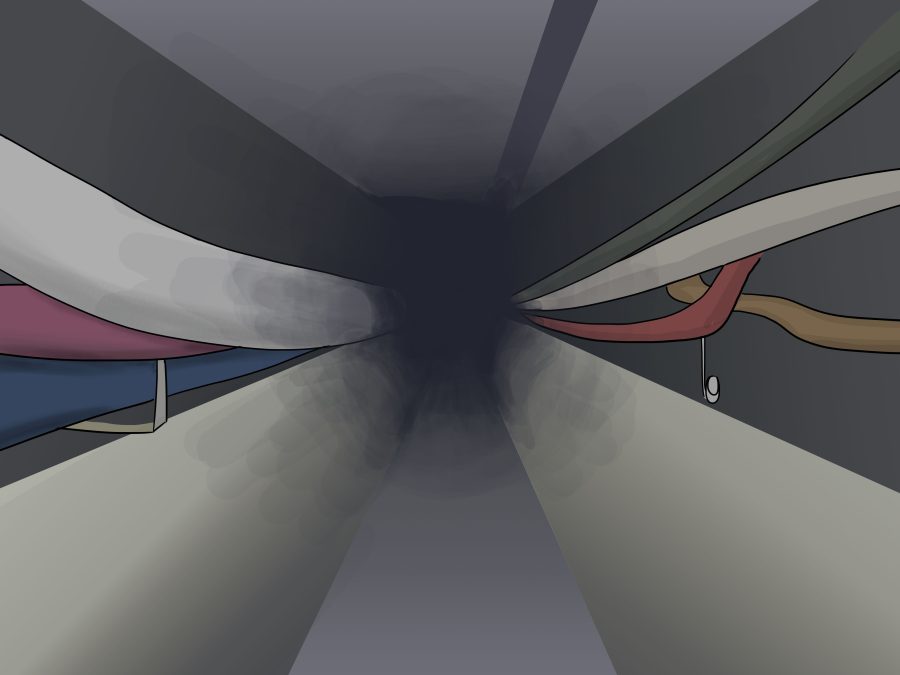Every day, thousands of UC San Diego students traverse campus, not realizing that beneath their feet lies a winding network of underground tunnels. The UCSD Guardian talked with Stephen Jackson, Director of Facilities Management, about the history and function of this hidden tunnel system.
Some say they were built for faculty members to escape from rioters protesting the Vietnam War; some say they’re meant to shelter people from nuclear attacks. Others aren’t even sure of their existence. UCSD’s underground tunnels do, in fact, exist, but these speculations are far from their real purpose.
Forming a continuous loop through campus, the tunnels run from Roger Revelle College up to Thurgood Marshall College, then around Geisel Library and down Library Walk to the School of Medicine. They act as service tunnels, distributing utilities throughout campus.
“The underground tunnels provide a distribution path for campus utilities such as natural gas, telecom, compressed air, deionized water, high temperature hot water and our chilled water systems,” explained Stephen Jackson, Director of Facilities Management at UCSD.
While the rather unremarkable function of the underground tunnels may be disappointing to some, they are still an essential part of our campus’ history and infrastructure. Parts of the tunnel system date back to the 1960s, when construction of UCSD’s campus began.
Jackson noted, “Original construction of the tunnels occurred in the early 1960s when the Central Utility Plant and Urey Hall were built. They were then extended in the late 1960s and early 1970s with the expansion of the School of Medicine and the John Muir College campus.”

The underground tunnel technology allows for a more efficient way to distribute utilities, and even earned UCSD the Energy Star CHP Award in 2010 for cutting back on fuel and emissions. Jackson explained that systems for carrying utilities can be either centralized, like our tunnel system, or decentralized, in which buildings have individual utility systems.
“The tunnels are used because they provide both the conduit for the utility infrastructure as well as the access for our utilities technicians to provide maintenance and repair support,” he said.
Similar infrastructures are common in other college campuses, where utilities must be delivered to multiple buildings. Like UCSD, these colleges’ tunnels have inspired myths of their own. The University of Wisconsin’s tunnel system, for example, is notorious for a man students have dubbed Tunnel Bob, who roams the tunnels and has even invited students to play hide-and-seek with him underground.
Despite serving a thoroughly practical function, the underground tunnel system still piques the curiosity of adventurous students. And it’s no wonder why they do — they’re dark, creepy, and have taken on a somewhat mythical status. Yet students who sneak into the tunnels for some thrills and chills risk injury and even death.
“The tunnels contain piping with high temperature hot water, natural gas, and electricity — all of which could be potentially dangerous if there was a leak,” warned Jackson.
For this reason, entry into the tunnels is strictly prohibited to the public. And even if students can manage to creep through the tunnels unharmed, there’s still the possibility they will be caught and punished for trespassing.
“All tunnel entrances have alarms, which are monitored by the UCSD Police,” Jackson stated. “If an alarm is triggered then the police department dispatches an officer to investigate.”
The tunnel system’s inaccessibility to students has inspired urban legends about what exactly is down there besides piping. One rumor states that there are walls of the tunnel depicting Vietnam War-era graffiti of Richard Nixon. Another interesting theory is that the tunnels are where the university stores old magnetic tapes and lab equipment.
Still, the tunnels could hold secrets waiting to be discovered. Could UCSD have its very own Tunnel Bob? Are the underground tunnels the meeting place for some secret society? If you’re willing to risk deadly pipe bursts and misconduct charges, there’s only one way to find out.
Art by David Juarez













